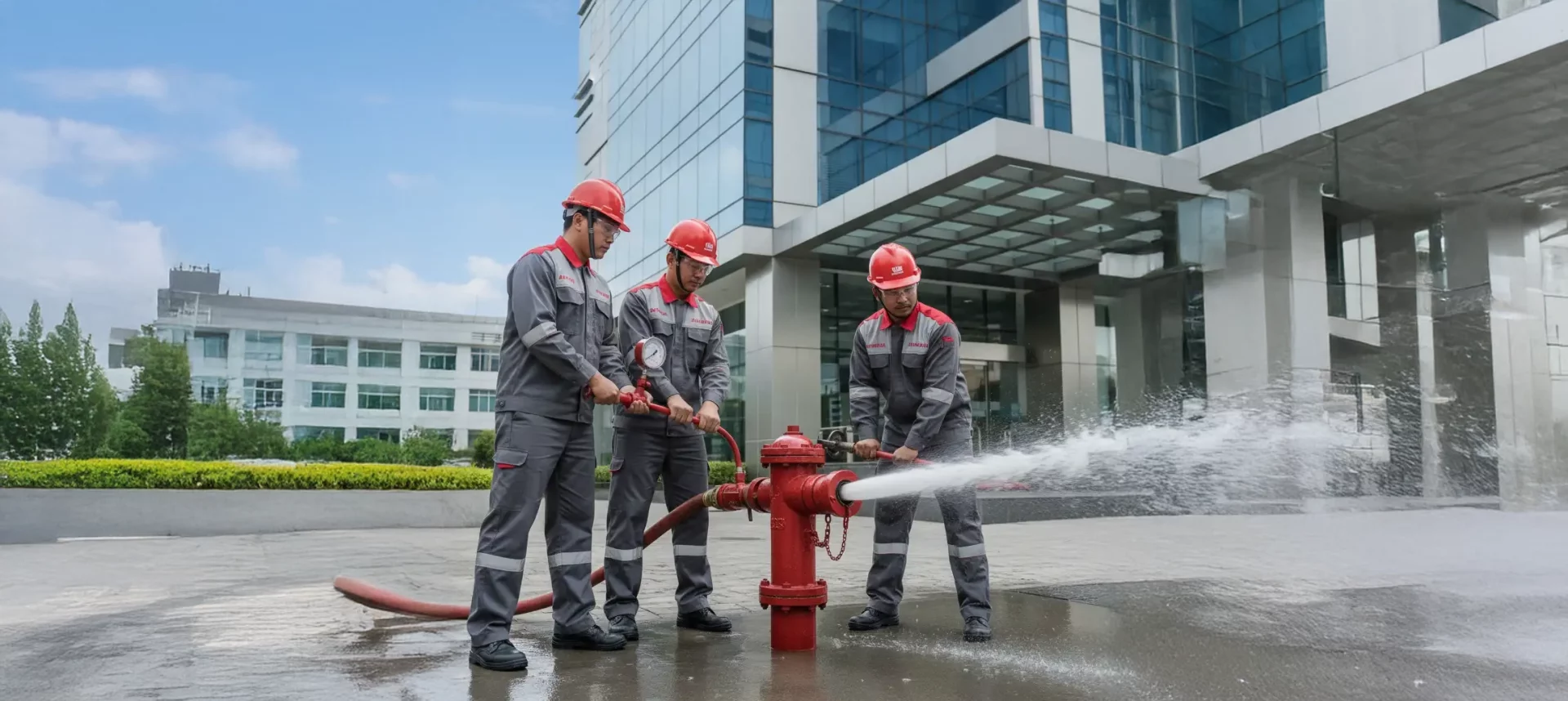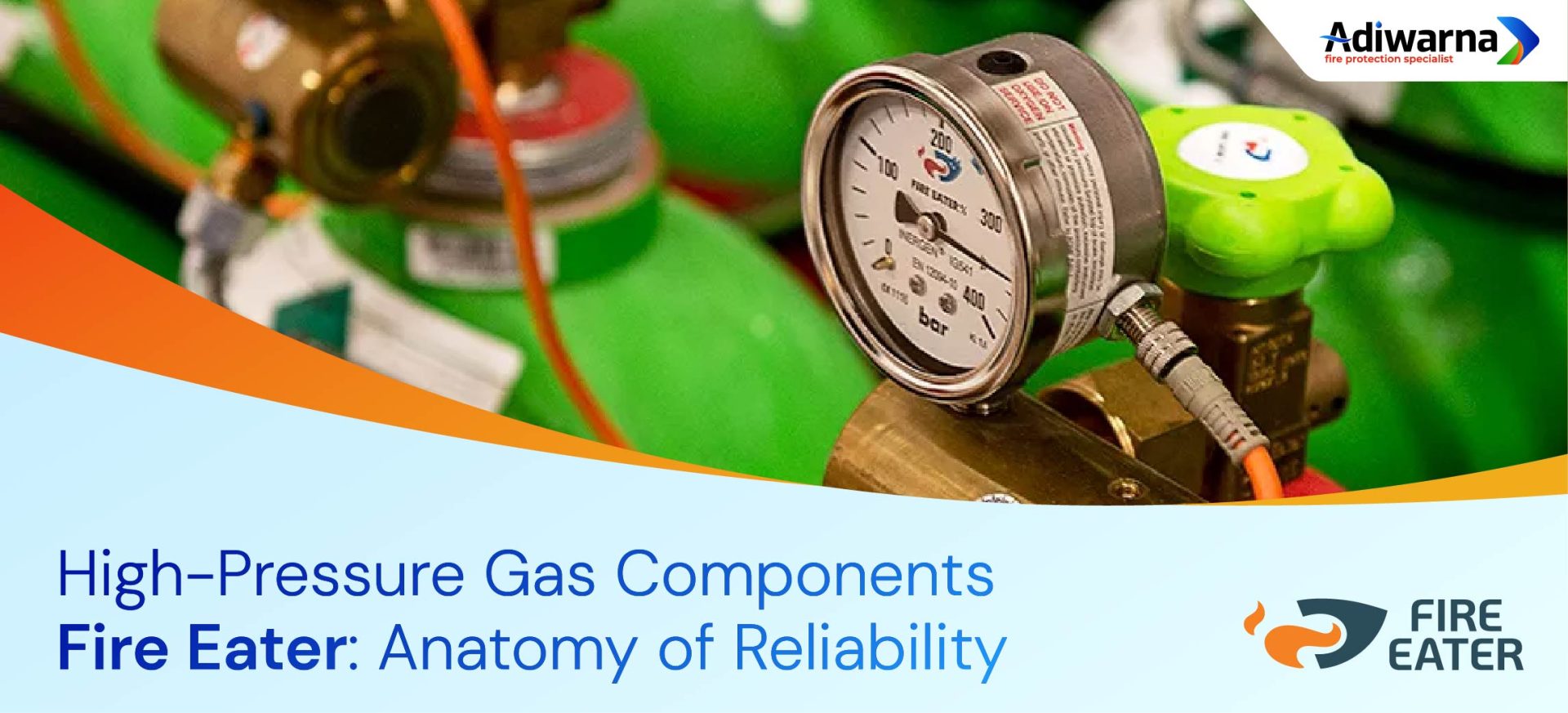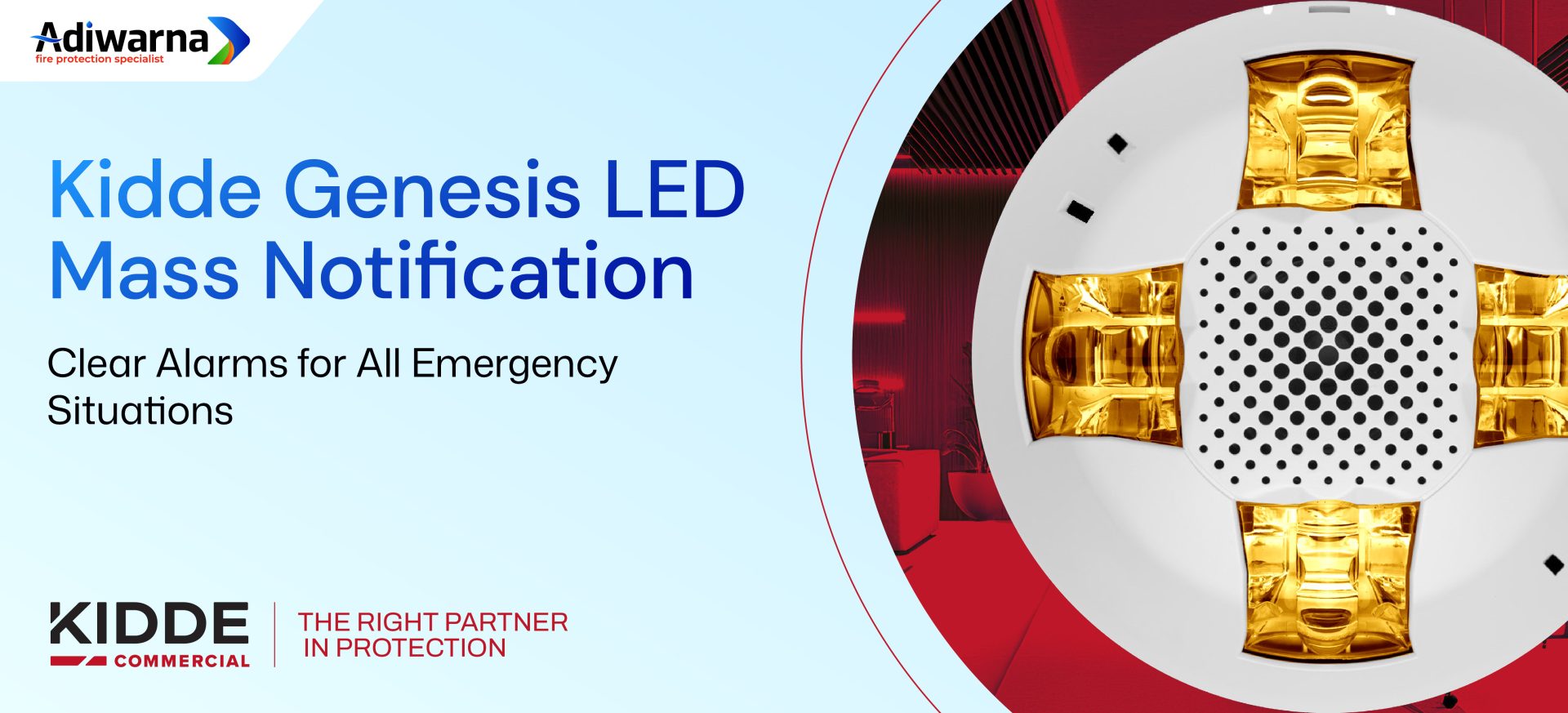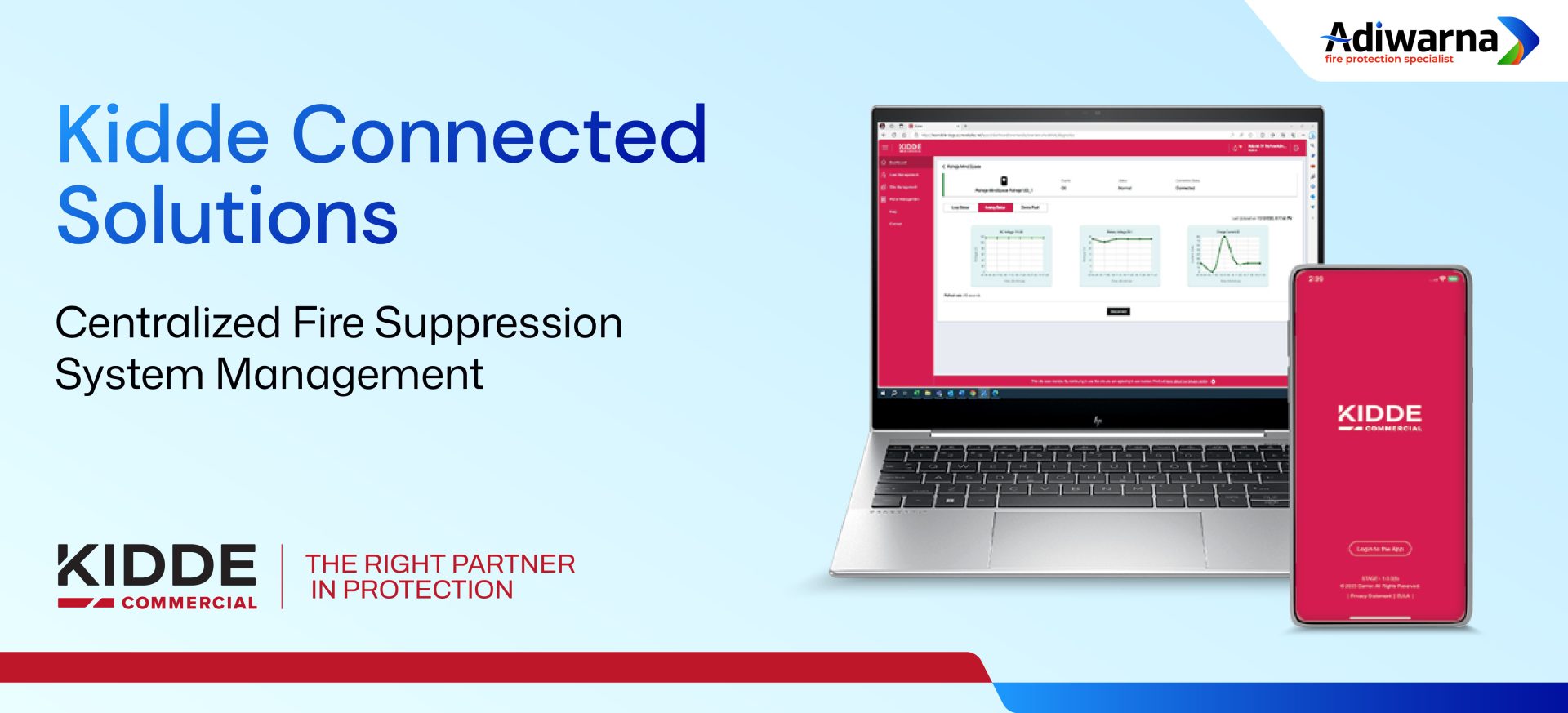Fire can occur anytime, even in facilities with the most advanced safety systems. That’s why implementing a Fire Suppression System has become an essential aspect of building safety—especially for hospitals, data centers, and industrial facilities.
As a leading fire protection contractor in Indonesia, Adiwarna delivers complete fire suppression solutions using modern and environmentally friendly technology to protect both people and assets.
What Is a Fire Suppression System?
A Fire Suppression System is an automatic fire extinguishing system designed to detect and suppress fires before they spread.
Unlike traditional sprinkler systems that use water, suppression systems can utilize gas, foam, or high-pressure mist, depending on the application and the type of hazard.
These systems are typically integrated with fire alarm systems and smoke detectors, enabling them to respond quickly and efficiently while minimizing damage to sensitive equipment such as servers or electrical panels.
Read also: Apa itu FM-200 Fire Suppression System?
Types of Fire Suppression System Commonly Used

1. Gas-Based Suppression System (FM200, Inergen, CO₂)
Gas suppression systems are the preferred choice for data centers, laboratories, and control rooms, where the use of water-based extinguishers could damage critical equipment.
Systems using FM200, Inergen, or CO₂ extinguish fires by reducing oxygen concentration and interrupting the chemical reaction of combustion—without leaving residue.
Advantages:
- Safe for electronics and electrical components.
- Fast activation (within 10 seconds of fire detection).
- No residue, no cleanup required.
2. Foam System for Industrial Facilities
Foam systems are ideal for environments containing flammable liquids such as fuel, oil, or chemicals. The foam forms a blanket over the surface, cutting off oxygen supply to the fire.
Commonly used in fuel depots, aircraft hangars, and chemical plants, foam systems provide high coverage and rapid suppression.
Water Mist and Sprinkler System
Water mist systems use ultra-fine water droplets at high pressure to cool and suffocate fires while minimizing water damage.
Meanwhile, sprinkler systems activate when heat melts the fusible element in the sprinkler head, releasing water directly onto the fire source.
These systems are often deployed in offices, hospitals, and commercial complexes.
How Does a Fire Suppression System Work?
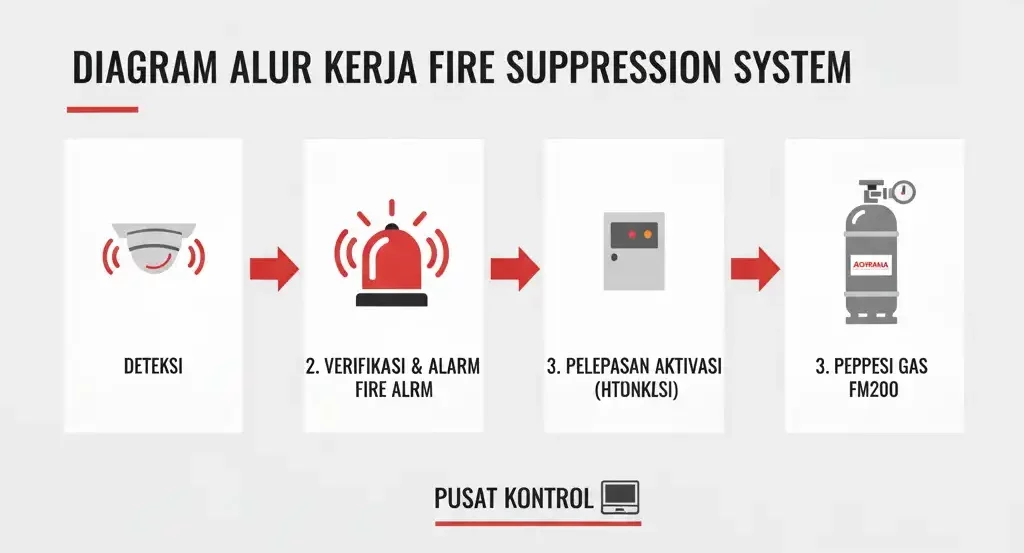
The process typically involves five key stages:
- Detection: Smoke or heat detectors identify early signs of fire.
- Notification: The system triggers the fire alarm panel and alerts occupants.
- Activation: The suppression system automatically releases gas, foam, or water.
- Isolation: Ventilation and access points close to contain the fire.
- Monitoring: Control panels display system status for operator verification.
Advantages of Adiwarna’s Fire Suppression System
Integration with Fire Alarm Systems
Adiwarna designs every fire suppression installation to work seamlessly with automatic fire alarm systems, ensuring fast response and precise signal activation in case of emergencies.
NFPA & SNI Standard-Compliant Design
All Adiwarna systems comply with NFPA (National Fire Protection Association) and SNI (Indonesian National Standard) guidelines—ensuring safety, legality, and international compliance.
Routine Maintenance and Gas Refill Services
Adiwarna provides full-service maintenance, including Inergen and FM200 refill, performance inspection, and system certification to ensure continued operational readiness.
Fire Suppression System Applications in Indonesia

Data Center Fire Protection
Data centers require residue-free fire protection. Adiwarna’s Inert Gas systems (Inergen) are ideal for such environments, protecting sensitive electronics without causing corrosion or downtime.
Hospital and High-Rise Building Applications
Fire suppression systems are widely used in hospitals, offices, hotels, and shopping malls, where protecting human lives is the top priority.
Why Choose Adiwarna as Your Fire Suppression System Contractor?
- Over a decade of expertise in fire protection systems.
- Certified and experienced technical team.
- End-to-end services — from design and installation to maintenance.
- Partnerships with trusted global brands such as Edwards Vigilant, Kidde, and Tyco.
Frequently Asked Questions (FAQ)
Is a Fire Suppression System required in every building?
Not necessarily, but it’s highly recommended for high-value or critical environments such as data centers and control rooms.
What’s the difference between FM200 and Inergen?
FM200 is a chemical gas, while Inergen is a natural inert gas mixture (Nitrogen, Argon, CO₂) that’s environmentally safe.
How long does a suppression system last?
Typically 10–15 years with regular inspections, maintenance, and cylinder refills as per regulations.
Conclusion
The Fire Suppression System is more than just an optional feature—it’s a necessity for modern fire safety.
With technologies like FM200, Inergen, and Foam Systems, Adiwarna provides advanced, efficient, and environmentally friendly protection solutions.
Investing in fire suppression isn’t just about compliance—it’s about ensuring the safety of people, data, and the future of your business.




